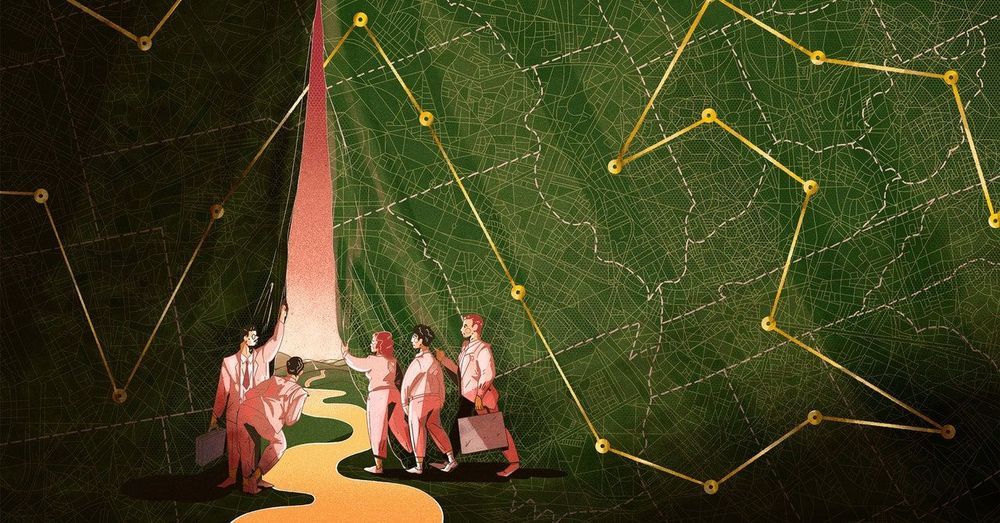Tempest is on its way to catch huge amounts of data as big as a city per second.



Two massive clouds of dust in orbit around the Earth have been discussed for years and finally proven to exist.

Over the last years, there has been an exponential increase in investment in quantum technologies worldwide. The global effort for #publicfunding has been boosted. It is an amazing and exciting time of innovation in this new second quantum revolution. We have summarised the main programs and efforts around the world below. It is not a quantum race. It is a global ecosystem to develop new #quantum technology! It might be outdated by now, but it gives an idea 💡 and add to it the latest announced investments. However, this is not the real deal. Most are disguised under other initiatives such as the ones carried by the DOE in the US.
Over the last years there has been an exponential increase on investment in quantum technologies worldwide. The global effort for public funding has been boosted. It is an amazing and exciting time of innovation in this new second quantum revolution.
We have summarised the main programs and efforts around the world below. It is not a quantum race, it is a global ecosystem to develop the new quantum technology!
Canada is considered one of the world’s leading nations in quantum research. It has invested more than $1 billion in quantum research over the past decade [1].

Now Karlin, Klein and Oveis Gharan have proved that an algorithm devised a decade ago beats Christofides’ 50 percent factor, though they were only able to subtract 0.2 billionth of a trillionth of a trillionth of a percent. Yet this minuscule improvement breaks through both a theoretical logjam and a psychological one. Researchers hope that it will open the floodgates to further improvements.
“This is a result I have wanted all my career,” said David Williamson of Cornell University, who has been studying the traveling salesperson problem since the 1980s.
The traveling salesperson problem is one of a handful of foundational problems that theoretical computer scientists turn to again and again to test the limits of efficient computation. The new result “is the first step towards showing that the frontiers of efficient computation are in fact better than what we thought,” Williamson said.


Being an astronaut of the 2020s will be completely different than it was for any astronaut that came before, a panel of spaceflyers told the virtual International Astronautical Congress Wednesday (Oct. 14).
The spaceflight environment is rapidly changing due to several different factors. The International Space Station (ISS) is pushing harder into commercialization and will soon be welcoming more and larger space agency crews on commercial crew vehicles while bringing in a few private astronauts.

This eVTOL air taxi design looks like a weird helicopter/plane hybrid, but it’s the safest of all the eVTOL designs we’ve ever seen, and it has another killer advantage in that it requires no special certification. That’s huge news in the emerging 3D commuting market, because it could make this thing much, much cheaper to get off the ground.
To understand why this thing is such a great idea, let’s recap two of the main hurdles that every other eVTOL designer is facing: safety and certification. The safety issue seems huge to us, although many of the eVTOL manufacturers we speak to don’t seem to see it as insurmountable. In a total failure scenario, all eVTOLs designed around multiple small rotors have a bit of an issue: they’ll simply plummet to the ground.
You can solve this problem using a ballistic parachute that fires out and brings them down gently, but below a certain altitude, maybe 120 feet or so, these ‘chutes don’t have time to fully open and deploy, leaving these aircraft negotiating what we’ve been calling a “death zone” every time they take off and land. It’s only for a short amount of time, but the consequences of total failure in this zone would be equally total, and just one such crash in the early days of air taxi services would undermine passengers’ faith in the entire eVTOL sector.
Leading tech companies are increasingly using AI to influence our behaviour. But how persuasive do we find virtual assistants?

Current optical techniques can image neuron activity only near the brain’s surface, but integrated neurophotonics could unlock circuits buried deep in the brain. Credit: Roukes et. al.
But current optogenetic studies of the brain are constrained by a significant physical limitation, says Laurent Moreaux, Caltech senior research scientist and lead author on the paper. Brain tissue scatters light, which means that light shone in from outside the brain can travel only short distances within it. Because of this, only regions less than about two millimeters from the brain’s surface can be examined optically. This is why the best-studied brain circuits are usually simple ones that relay sensory information, such as the sensory cortex in a mouse—they are located near the surface. In short, at present, optogenetics methods cannot readily offer insight into circuits located deeper in the brain, including those involved in higher-order cognitive or learning processes.
Integrated neurophotonics, Roukes and colleagues say, circumvents the problem. In the technique, the microscale elements of a complete imaging system are implanted near complex neural circuits located deep within the brain, in regions such as the hippocampus (which is involved in memory formation), striatum (which controls cognition), and other fundamental structures in unprecedented resolution. Consider the similar technology of functional magnetic resonance imaging (fMRI), the scanning technique currently used to image entire brains. Each voxel, or three-dimension pixel, in an fMRI scan is typically about a cubic millimeter in volume and contains roughly 100,000 neurons. Each voxel, therefore, represents the average activity of all of these 100,000 cells.